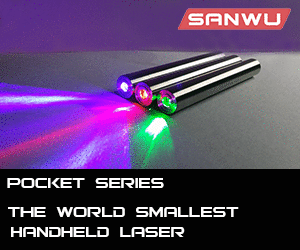OK... I'm guessing you didn't look for the site I was talking about earlier. Go here:
http://www.hebeiltd.com.cn/?p=zz.led.resistor.calculator
Inputing 5.6V (that is 4 x 1.4V), with estimating a forward voltage for the laser diode of 4.5V and outputing 40ma, the calculator predicts a 27ohm resistor should be put in series with the laser diode, 33ohms is the nearest standard value.
The resistor acts to drop the excess voltage from the battery to the diode while at the same time limiting current. As I said before, though, this voltage and current regulation is entirely dependent on the supply voltage, meaning that as the battery loses voltage, the voltage and current to the laser diode will also drop.
I don't know the lasing threshold of voltage for the diode, but for current, it's somewhere around 25ma, so once the output is limited to below 25ma, the diode may not lase anymore, but just give off a dim violet light. An easy way to determine the driving current is to measure the voltage across the resistor (say 1.32V) and measure the EXACT resistance of the resistor (say 33.0ohms), that equates (using Ohm's law, I=V/R) to 0.04A or 40mA. But once the voltage drops to around 0.825, that means the output is only around 25mA and possibly below the threshold for the diode.
Unfortunately, the Blu-Ray diodes are pretty variable in their forward voltage (I measured 10 of them, and they ranged from 4.33V to 4.98V at the same driving current). And since your battery voltage input will constantly change, the output will probably drop off quickly with use, especially using the button cells.
All I can tell you is to experiment around and see what you can get out of it. Just be careful, the diodes are sensitive to voltage spikes caused by static discharge and if you connect a charged capacitor to them. So, always ground yourself to prevent static and always short out the capacitor before connecting AND disconnecting it from the laser diode.



